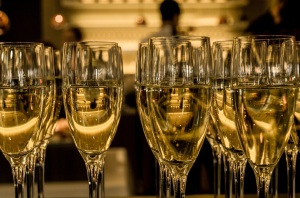 At first blush, the reviews of the 170-year-old Champagne discovered in a shipwreck in the Baltic Sea were less than appealing.
At first blush, the reviews of the 170-year-old Champagne discovered in a shipwreck in the Baltic Sea were less than appealing.
“Animal notes,” was one expert’s observation. “Wet hair,” was another, and some described the ancient bubbly as “cheesy.”
But then, as the rare find was exposed to more air, it began to get better in the opinions of the professional wine tasters. It took on characteristics of traditional, expensive, aged Champagne: Spicy, smoky, fruity and floral.
Beyond the sensory curiosity of tasting a wine made 170 years ago, though, the discovery and subsequent analysis of the Champagne by French and German scientists provided significant insight into a field called archaeochemistry.
A total of 168 bottles were recovered from the wreck off the coast of Finland, and they were identified by their corks as coming from three French Champagne houses in vintages from 1832-40.
In addition to being taste-tested in comparison to modern Champagne, the wine also was analyzed chemically. The chemical testing displayed the change in the French climate since the early 1800s, as well as differences in yeasts and winemaking techniques.
But it also showed that the process of making Champagne, which involves at least two periods of fermentation, in many ways has not changed significantly in almost two centuries. The ancient wines were made to be free of contamination, and even with a higher sugar level than modern Champagne, they still were palatable.
“Owing to molecular insights acquired by comparing the Baltic Champagnes to modern ones, we managed to decipher a clearer view of the winemaking practices used in Champagne at the beginning of the 19th century and to compare it to the modern winemaking process,” the authors noted in a report on the study published in the journal Proceedings of the National Academy of Sciences.
